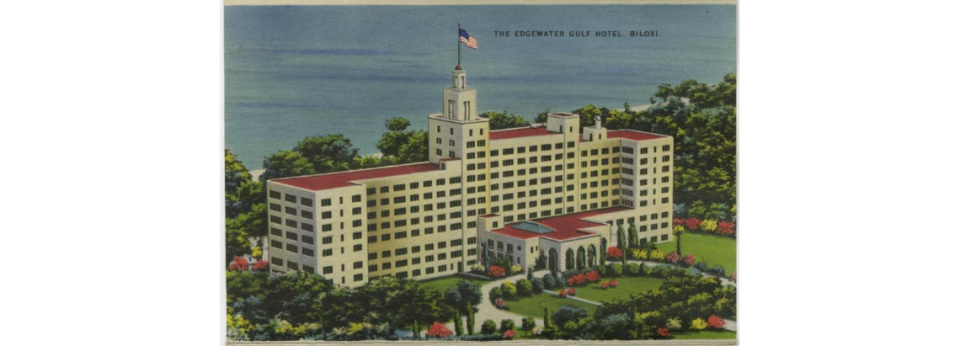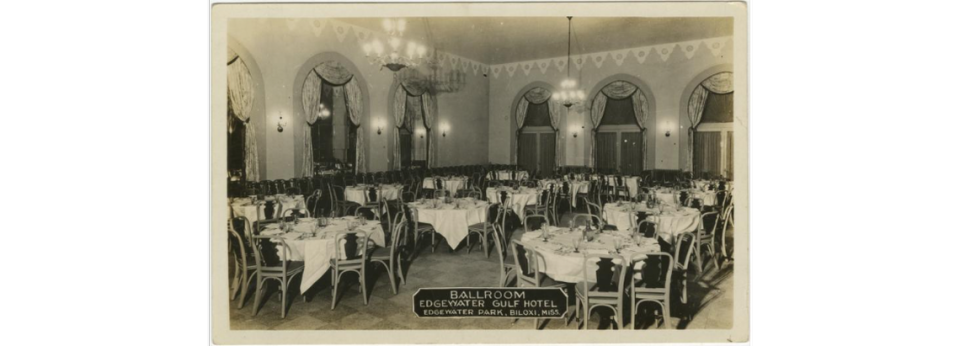This Biloxi beach hotel was one of the most unique buildings in MS. Why was it torn down?
The Edgewater Gulf Coast Hotel once stood as one of the most luxurious and popular hotels on the entire Mississippi Coast.
The hotel was conceptualized by the architectural firm Marshall and Fox, who drew inspiration from their highly popular Edgewater Beach Hotel in Chicago.
On Feb. 26, 1926, the grand 400-room hotel opened its doors to the public, quickly becoming an overnight sensation for both locals and tourists. Travelers coming from the north on the Central Illinois Railroad were conveniently dropped off at the Edgewater Park Station, right on the sprawling 600-acre hotel grounds.
Because of its unique design, the majority of guests were treated to breathtaking views of the Gulf of Mexico right from the comfort of their rooms.

Unlike several other Gulf Coast hotels and resorts, the Edgewater Gulf Hotel survived through the Great Depression and World War II, becoming a thriving venue for post-war businesses and events.
The interior boasted massive hallways adorned with marble and brass, while the lounge featured a grand conical fireplace and abundant seating. Over the decades, an untold number of business and commercial ventures were discussed and planned in the hotel’s meeting rooms.
The Edgewater Gulf Hotel took great pride in its state-of-the-art air conditioning system, which provided guests a retreat from the sweltering Gulf Coast heat. Additionally, guests were able to enjoy an indoor coffee shop, gift shop, as well as a grand ballroom, which hosted numerous events each year.

The Marine Room, an elegant diner, treated hotel guests to good food, fine china, heavy linen, and excellent service. In an adjacent room, a massive glass wall provided guests with a panoramic view of the beach and Gulf Coast.
Despite being built in the 1920s, the Edgewater Gulf Hotel’s exterior looked like something from the 21st century. The only classical feature was a Moorish central tower, as well as the elegant garden that surrounded it.
The hotel also boasted its own tennis courts, a golf course and a pool that could be enclosed during the winter months. Over the years, it became a one of the top destinations for locals seeking swimming lessons, hobbies, and golf tournaments.
The Edgewater Gulf Hotel underwent several renovations and modernization efforts in the 1950s and 1960s, yet struggled to keep up with the competition posed by newer hotels. Eventually, its fortunes declined further when the Edgewater Plaza Shopping City was completed right next door, diverting attention and resources away from the once-thriving hotel.
In 1970, the hotel’s owners, the Wakulla Edgewater Co. of Florida, made the difficult decision to close its doors. Just a year later, the vacant building was slated for demolition.

In front of a somber crowd of locals, Controlled Demolition of Baltimore executed a controlled implosion of the hotel. As the initial explosions only brought down the central tower, several onlookers clapped after seeing their beloved hotel was still standing.
According to local lore, the demolition teams uncovered previously forgotten building codes, showing the hotel was built and reinforced with a stronger foundation and supports than most buildings of the time. However, another round of explosions ultimately brought the Edgewater Gulf Hotel to its final end.
The Edgewater Mall later expanded into the empty lot, creating a Sears store where the hotel once stood.
While there is no physical trace of the Edgewater Gulf Hotel left, many older residents still hold fond memories of one of the most unique buildings to ever exist on the Mississippi Coast.

